《Analytical polymer rheology structure-processing-property relationships》
| 作者 | Charles L. Rohn 编者 |
|---|---|
| 出版 | Hanser Publishers |
| 参考页数 | 314 |
| 出版时间 | 1995(求助前请核对) 目录预览 |
| ISBN号 | 156990149X — 求助条款 |
| PDF编号 | 813984518(仅供预览,未存储实际文件) |
| 求助格式 | 扫描PDF(若分多册发行,每次仅能受理1册) |
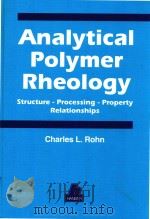
Chapter 1History of Rheology and Macromolecular Science1
Chapter 2Principles of Mechanics12
2.1 Introduction12
2.2Classical Mechanics12
2.2.1 Newton’s First Law of Motion13
2.2.2 Newton’s Second Law of Motion16
2.2.3 Newton’s Third Law of Motion19
2.3 Rotational Motion20
2.4 Angular Momentum22
2.5 Oscillatory Motion24
2.6 Natural Frequencies and Resonance26
Chapter 3Stress and Strain30
3.1 Introduction30
3.2 Strain Tensor30
3.3 Continuum Concept33
3.4 Engineering Elasticity37
3.5 Viscosity41
3.6 Constitutive Equations43
Chapter 4Gases47
4.1 Introduction47
4.2 Kinetic Theory47
4.3 Distribution of Molecular Velocities51
4.4 Molecular Effusion53
4.5 Transport Processes55
4.6 Molecular Diffusion58
4.7 Heat Transfer60
4.8 Principle of Equipartition of Energy61
4.9 Nonideal Gases63
4.10 Law of Corresponding States64
4.11 Intermolecular Interactions65
4.12 Relaxation Times69
4.13Appendix70
4.13.1 Thermodynamics70
Chapter 5Rubber76
5.1 Introduction76
5.2 Thermodynamics76
5.3 Tensile/Compression Stress-Strain Properties80
5.4 Distribution of Rubbery Chain Conformations Due to an External Stress82
5.5 Tensile Strength84
5.6Rubber Products85
5.6.1 Tank Tread Problem89
5.6.2 Rack-and-Pinion Seal90
Chapter 6Solids92
6.1 Perfect Crystals92
6.2 Imperfect Crystals104
6.3 Polymeric Crystals107
6.4 Semicrystalline Polymers109
6.5 Amorphous Solids111
6.6 Oriented Polymers111
Chapter 7Fluids and Polymer Solutions117
7.1 Introduction117
7.2 Free-Volume (Hole) Theory118
7.3 Polymer Solutions121
7.4 Gel Permeation Chromatography123
7.5 Rouse Model125
Chapter 8Polymer Melts130
8.1 Introduction130
8.2 Shear Rate and Frequency Dependence of Viscosity130
8.3 Shear Rate and Frequency Dependence of Elasticity135
8.4 Temperature Dependence of Viscosity141
8.5 Extensional Viscosity: Melt Tension and Draw Down143
8.6 Reptation Theory (Tube Model)148
Chapter 9Phase Changes and Transitions152
9.1 Introduction152
9.2 First Order Transitions152
9.3 Crystallization and Melting154
9.4 Homopolymers156
9.5 Copolymers160
9.6 Glass Transition171
9.7 Transition Region174
9.8 Secondary Transitions180
9.9 Modulus-Temperature Curves183
Chapter 10Suspensions189
10.1 Introduction189
10.2 Viscoelasticity of Suspensions189
10.3 Electrostatic Interactions193
10.4 Steric Interactions195
10.5 Polymer Blends196
10.6 Compatible Blends197
10.7 Incompatible Blends197
10.8 Block Copolymers199
10.9 Interpenetrating Polymer Networks199
10.10 Filled Plastics201
10.11 Phase Separation and Storage Stability202
10.12 Flow and Leveling204
10.13 Flow and Sagging205
Chapter 11Linear Viscoelasticity209
11.1 Introduction209
11.2 Maxwell Model209
11.3 Boltzmann Superposition Principle210
11.4 Creep Properties212
11.5 Stress Relaxation Properties217
11.6 Dynamic Mechanical Properties218
Chapter 12Rheological Testing222
12.1 Introduction222
12.2Principles of Rheological Measurements223
12.2.1 Strain Dependence224
12.2.2 Frequency (Rate) Dependence224
12.2.3 Temperature Dependence225
12.2.4 Temperature-Frequency Dependence227
12.3Fluids Testing227
12.3.1 Effusion of Gases Experiment227
12.3.2 Capillary Viscometer228
12.4 Experimental Measurements of Fluids234
12.5 Rotational Viscometers236
12.6Solids Testing239
12.6.1 Statics239
12.6.2 Tensile Testing240
12.6.3 Compressive Testings241
12.6.4 Flexural Testing243
12.6.5 Torsional Testing247
12.6.6 Impact Testing249
12.6.7 Tear Testing251
12.7 Oscillatory Testing251
Chapter 13Polymer Fabrication and Properties256
13.1 Introduction256
13.2Extrusion258
13.2.1 Extrusion Quality261
13.2.2 Extruder Dies264
13.3Output Rates264
13.3.1 Die Swell265
13.3.2 Haze and Gloss of Films272
13.3.3 Toughness of Blown Films274
13.4 Injection Molding278
13.5 Using Rheology to Predict Long-Time Durability of Plastic Products278
13.6 Physical Aging279
13.7 Using Rheology to Predict Toughness of Plastic Products280
13.8 Impact Strength281
13.9 Summary283
Chapter 14Yielding and Fracture286
14.1 Introduction286
14.2 Theoretical Strength286
14.3Yielding Behavior288
14.3.1 Amorphous Polymers288
14.3.2 Semicrystalline Polymers290
14.4Fundamentals of Fracture Mechanics293
14.4.1 Hooke’s Law-Lattice Energy Theory298
14.4.2 Free Volume Theory299
14.4.3 Proof of Theory300
Index307
1995《Analytical polymer rheology structure-processing-property relationships》由于是年代较久的资料都绝版了,几乎不可能购买到实物。如果大家为了学习确实需要,可向博主求助其电子版PDF文件(由Charles L. Rohn 1995 Hanser Publishers 出版的版本) 。对合法合规的求助,我会当即受理并将下载地址发送给你。
高度相关资料
-

- THE ELECTRIC KILN
- 1994 Craftsman House
-
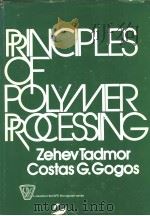
- PRINCIPLES OF POLYMER PROCESSING
- A WILEY-INTERSCIENCE PUBLICATION JOHN WILEY & SONS
-

- STRUCTURE-PROPERTY RELATIONSHIPS OF POLYMERIC SOLIDS
- 1983 Plenum Press
-

- Polymer rheology
- 1978 Applied Science Publishers
-

- Structure-property correlations in drug research
- 1996 Academic Press
-

- ANALYTICAL SEPARATIONS AND DETERMINATIONS:A TEXTBOOK IN QUANTITATIVE ANALYSIS
- 1971 MACMILLAN PUBLISHING CO.INC. COLLIER MACMILLAN PUBLISHERS
-

- Protein structure-function relationships in foods
- 1994 Blackie Academic and professional
-

- MATERIALS RESEARCH SOCIETY SYMPOSIUM PROCEEDINGS VOLUME 229 STRUCTURE/PROPERTY RELATIONSHIPS FOR MET
- 1990 MATERIALS RESEARCH SOCIETY
-
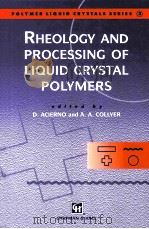
- RHEOLOGY AND PROCESSING OF LIQUID CRYSTAL POLYMERS
- 1996 CHAPMAN & HALL
-

- QUANTITATIVE STRUCTURE CHROMATOGRAPHIC RETENTION RELATIONSHIPS
- 1987 JOHN WILEY & SONS
-
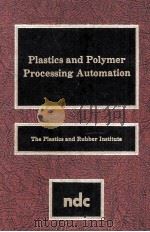
- PLASTICS AND POLYMER PROCESSING AUTOMATION
- 1987 NOYES DATA CORPORATION
-
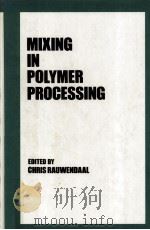
- MIXING IN POLYMER PROCESSING
- 1991 MARCEL DEKKER,INC
-

- Polymer Processing Principles and Design
- 1998 JOHN WILEY & SONS
-
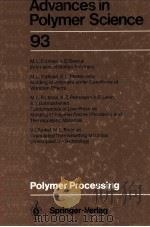
- ADVANCES IN POLYMER SCIENCE 93 Polymer Processing
- 1990 Springer-Verlag
-
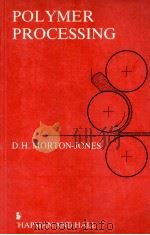
- Polymer Processing
- 1989 CHAPMAN AND HALL
提示:百度云已更名为百度网盘(百度盘),天翼云盘、微盘下载地址……暂未提供。➥ PDF文字可复制化或转WORD